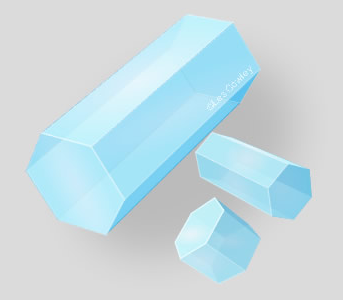Randomly Oriented Crystals
Randomly Oriented Crystals: A Phenomenon Behind Circular Halos
When we gaze up at the sky and witness the mesmerizing display of circular halos, we are witnessing a phenomenon that can be attributed to randomly oriented ice crystals. These crystals, with their haphazard alignments, play a vital role in creating these captivating optical effects. But have you ever wondered why aerodynamic forces, which are usually so effective, do not align these crystals? Let's delve deeper into this intriguing subject and explore the reasons behind the absence of equidimensional column crystals and the occurrence of circular halos.
In displays showcasing circular halos, we rarely encounter equidimensional column crystals in significant numbers. These crystals, although theoretically capable of being randomly oriented, seem to be scarce. Instead, poorly aligned crystals with large tilts from their equilibrium orientations are more likely to generate circular halos. It is interesting to note that very large columns, despite their size, can still exhibit poor orientations.
Aside from poorly aligned crystals, column clusters can also contribute to the formation of circular halos. These clusters, consisting of multiple columns, may occasionally be responsible for the enchanting optical effects observed in the sky. Understanding the interplay between crystal orientation and halo formation provides us with valuable insights into the mechanisms at work.
Let's examine the specific angles and their corresponding halo formations. Rays passing through column side faces with wedge angles of 60° produce a 22° circular halo when the crystals are poorly oriented. This particular halo is more commonly observed. On the other hand, when rays traverse a side face and an end face, resulting in a wedge angle of 90°, they create a much rarer 46° halo. Interestingly, supralateral arcs, which are frequently mistaken for the 46° halo, are more prevalent.
To summarize the key points:
- Circular halos are often explained by the presence of randomly oriented ice crystals.
- Equidimensional column crystals, which could theoretically be randomly oriented, are not commonly found in displays with circular halos.
- Poorly aligned crystals, with large tilts from their equilibrium orientations, are more likely to produce circular halos.
- Very large columns can exhibit poor orientations, contributing to the formation of circular halos.
- Column clusters, consisting of multiple columns, may also play a role in generating circular halos.
- Rays passing through column side faces with a wedge angle of 60° create a 22° circular halo when crystals are poorly oriented.
- Rays traversing a side face and an end face, resulting in a wedge angle of 90°, produce a rare 46° halo.
- Supralateral arcs are more frequent and are often mistaken for the 46° halo.
In conclusion, the intricate interplay between crystal orientation and aerodynamic forces gives rise to the captivating circular halos that grace our skies. While equidimensional column crystals may be absent from these displays, the presence of poorly aligned crystals and column clusters ensures that we can continue to marvel at these extraordinary optical phenomena. So, the next time you gaze at a circular halo, remember the hidden beauty of randomly oriented crystals suspended high above us.

Circular halos are most facilely explained by positing randomly oriented ice crystals.
But why do aerodynamic forces, otherwise so remarkably effective, not orient them? Equidimensional column crystals would in principle be randomly oriented but they are not found in any significant numbers in displays showing good circular halos.
However, total randomness is not essential, poorly aligned crystals – ones with large tilts from their equilibrium orientations, can produce circular halos. Very large columns can have poor orientations.
Column clusters might also sometimes be responsible.
Rays passing through column side faces with wedge angles of 60° give a 22° circular halo when the crystals are poorly oriented. Rays traversing a side face and an end face – wedge angle 90° - produce the very rare 46° halo. Supralateral arcs are more frequent and often mistaken for the former.
22° halo 46 and 22° and other halos.
Note: this article has been automatically converted from the old site and may not appear as intended. You can find the original article here.
Reference Atmospheric Optics
If you use any of the definitions, information, or data presented on Atmospheric Optics, please copy the link or reference below to properly credit us as the reference source. Thank you!
-
<a href="https://atoptics.co.uk/blog/randomly-oriented-crystals/">Randomly Oriented Crystals</a>
-
"Randomly Oriented Crystals". Atmospheric Optics. Accessed on April 26, 2024. https://atoptics.co.uk/blog/randomly-oriented-crystals/.
-
"Randomly Oriented Crystals". Atmospheric Optics, https://atoptics.co.uk/blog/randomly-oriented-crystals/. Accessed 26 April, 2024
-
Randomly Oriented Crystals. Atmospheric Optics. Retrieved from https://atoptics.co.uk/blog/randomly-oriented-crystals/.